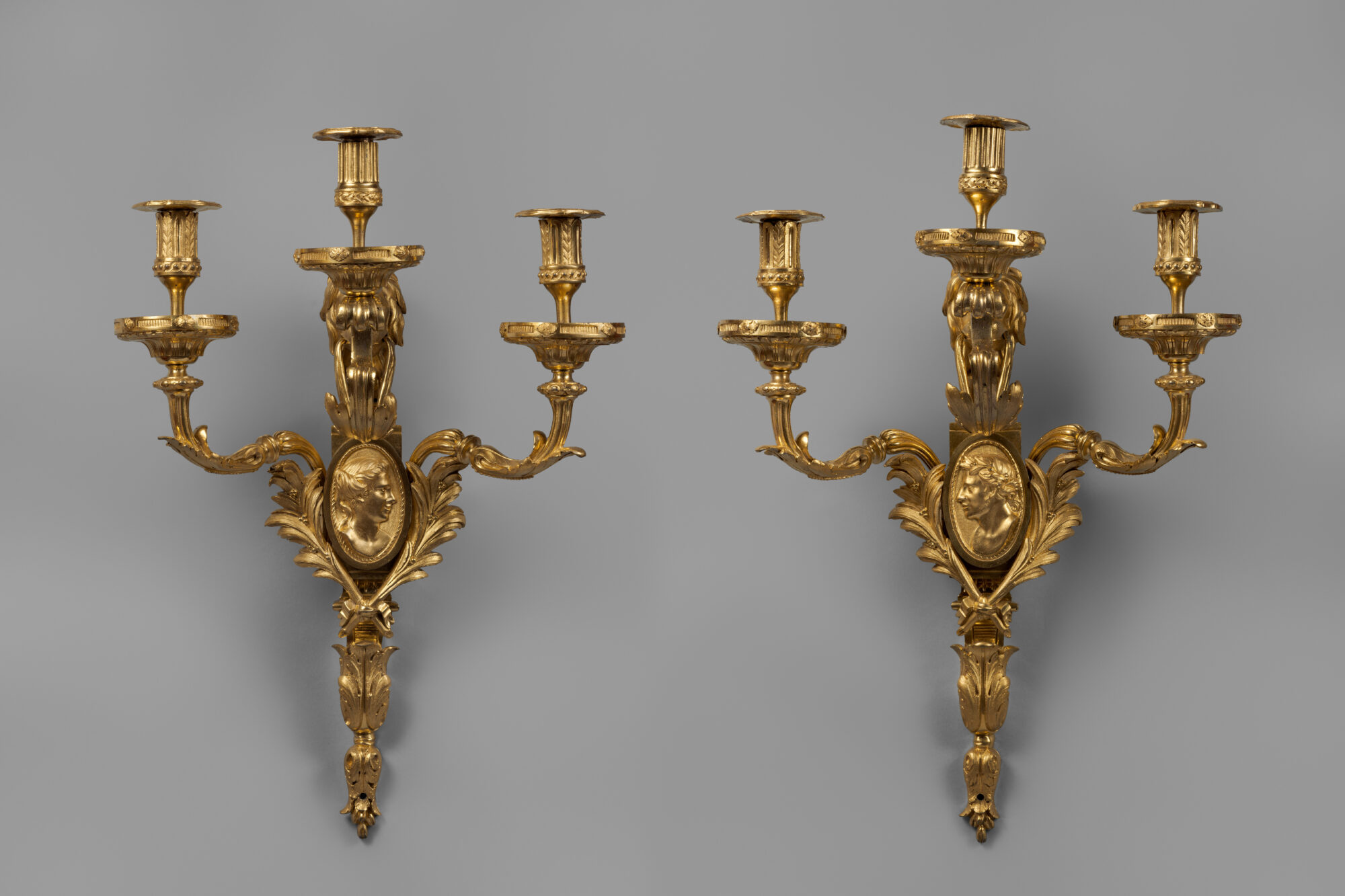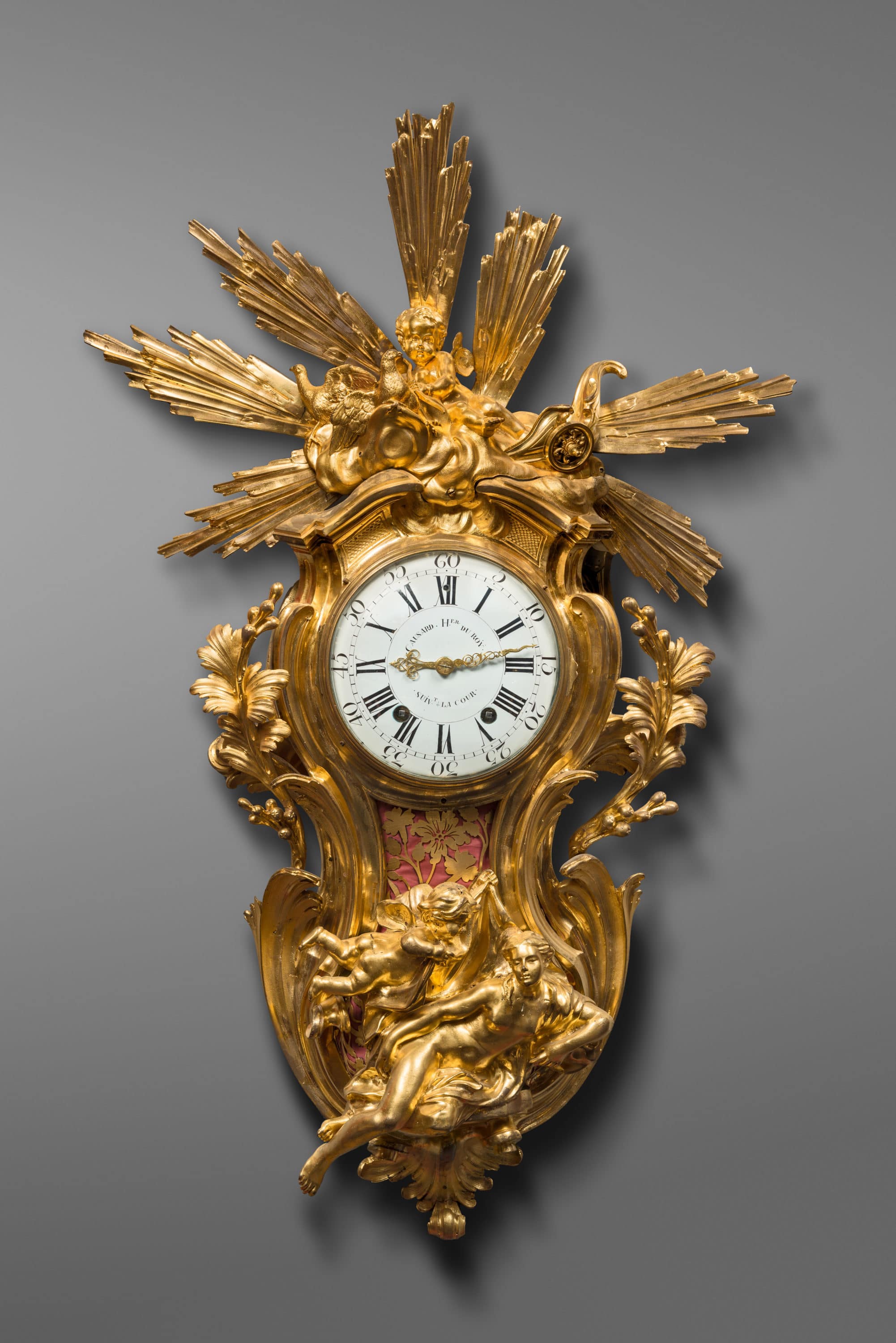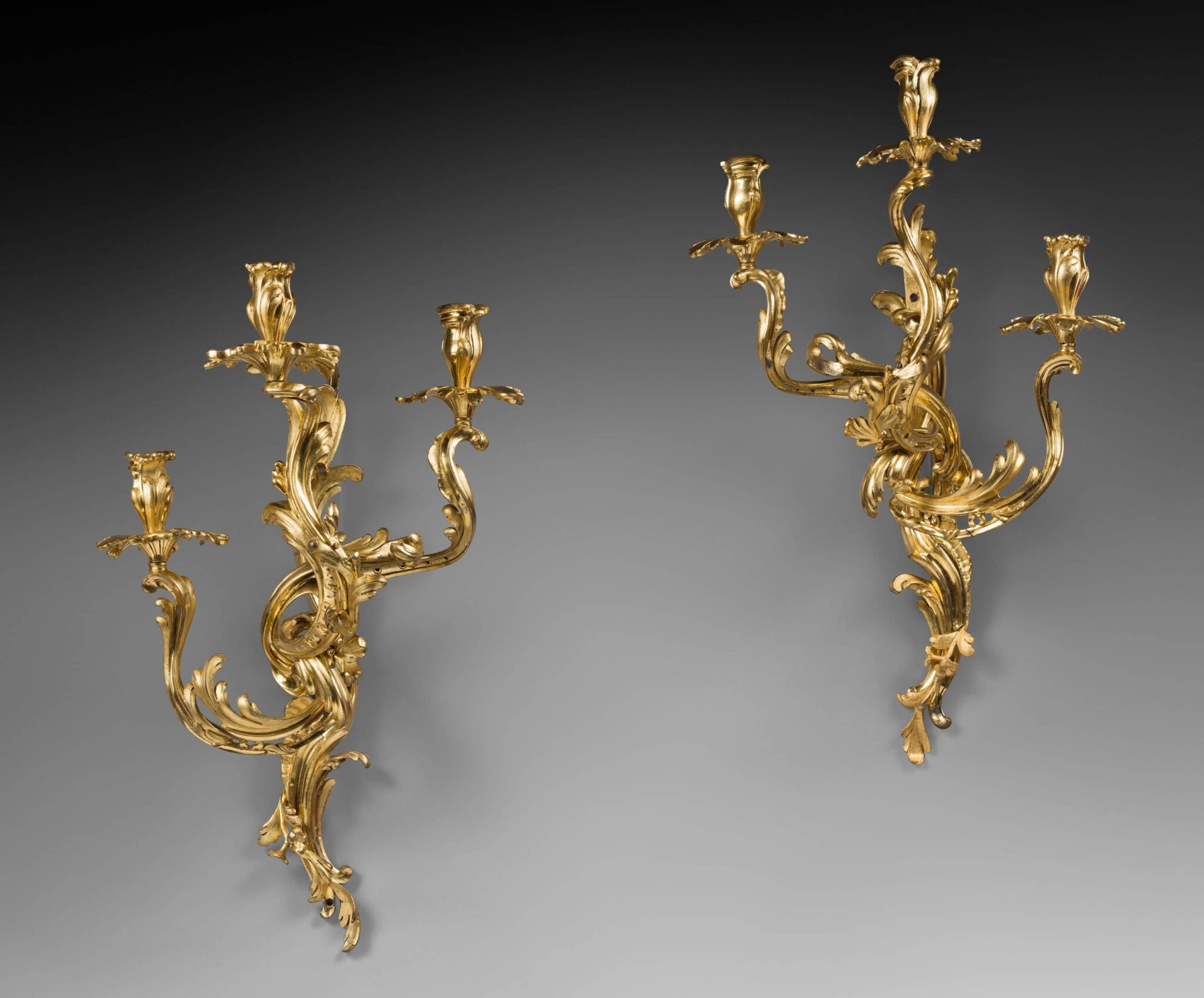Rare and Important Pair of Gilt Bronze Neoclassical Three-Branches Wall Lights with Matte Finishing
“The Lions and Medallions”

Confidently attributed to Bronze-Caster Philippe Caffieri
Paris, Transition period Louis XV-Louis XVI, circa 1765
Provenance:
Lady Lydia Deterding (1904-1980) illustrated in situ in her apartment in “Des chefs-d’œuvre pour décor quotidien”, in Connaissance des Arts, n°131, January 1963, p. 51.
Made entirely of finely chased matte gilt bronze, these wall lights feature an elongated central backplate decorated with oval medallions adorned with the profiles of a man and a woman facing each other, framed by palm fronds tied with a ribbon. Above, there is a lion’s head that holds a ribbon in its mouth, through which passes one of the arms, while the other two arms issue from behind the medallions. The curving arms are elaborately adorned with reed motifs, fluting, acanthus leaves, discs and knops decorated with interlace motifs centered by oval cabochons; the circular basins feature fluted reserves alternating with rosette motifs. The nozzles, adorned with fluting and foliage, feature bands that are embellished with piastres or interlace motifs with beads; they support the shaped drip pans. The lower portion of the wall lights features fluted reserves and wide acanthus leaves; it terminates in a motif of seeds and foliage.
The particularly elaborate design of the present rare pair of wall lights is a perfect illustration of French Neoclassicism as applied to the luxury Parisian lighting instruments of the early 18th century. It is particularly interesting to note that an anonymous drawing of a pair of two-light wall sconces featuring a lion’s head holding a ribbon and surmounting an oval medallion containing a male profile, now in a private collection, is known. It has been compared to the work of Philippe Caffieri (see H. Ottomeyer and P. Pröschel, Vergoldete Bronzen, Munich, 1986, Band I, p. 153). That comparison is supported by the inventory of the bronze caster’s stock, drawn up after his wife’s death in December 1770. It lists wall lights comparable to the present pair, such as “a model with two arms in the antique style, with a lion’s head and a lion’s skin suspended from the branches” valued at 160 livres, and “…another sconce with three arms, a garland of oak leaves on each branch and a ribbon-tied bow on the plate, and three others with one branch and with mascarons on the plates… » valued at 51 livres.
Philippe Caffieri (1714 - 1774)
Philippe Caffieri was no doubt the most important Parisian bronze caster of the late 18th century. The brother of sculptor Jean-Jacques Caffieri (1725-1792) and the son of Jacques Caffieri (1678-1755), “Sculpteur et ciseleur ordinaire du Roi”, in 1747 he went into partnership with his father. He became a master sculptor in January 1754 and a member of the Académie de Saint-Luc.
Upon the death of his father the following year, he took over the family workshop in the rue Princesse, purchasing his brother’s share of the workshop’s rococo models. Several months later, as a master’s son, he became a master caster “en terre et sable”. Initially he continued in the rococo style his father had favored, but later developed new models in the neoclassical style. He worked on the first example of an antique-inspired piece of furniture that was commissioned by the wealthy financier Ange-Laurent Lalive de Jully. Throughout his career, Philippe Caffieri worked for the most important Parisian collectors of the time.














